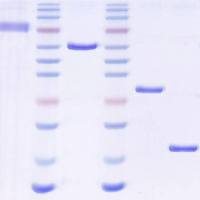Golden Gate Cloning
互联网
3426
DNA assembly methods are essential tools for biological research and biotechnology. Therefore various methods have been developed to clone DNA fragments of interest. Conventional methods usually require several cloning steps to generate a construct of interest. At each step, a single DNA fragment is transferred from a donor plasmid or PCR product to a recipient vector. In the past few years, a number of methods have been developed to facilitate and speed up this process. One of these methods, Golden Gate cloning, allows assembling up to nine fragments at a time in a recipient plasmid. Cloning is performed by pipetting in a single tube all plasmid donors, the recipient vector, a type IIS restriction enzyme and ligase, and incubating the mix in a thermal cycler. Despite the simplicity of the cloning procedure, the majority of clones obtained after transformation contain the expected construct. Using Golden Gate cloning however requires the use of carefully designed donor and recipient plasmids. We provide here a protocol describing how to design these plasmids and also describe the conditions necessary to perform the assembly reaction.









